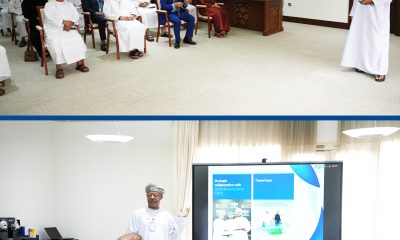Leaders Speak
Modi Needs More Than Tax Breaks to Make India an Investment Hub

(Bloomberg) — India wants to attract “mega investments” in manufacturing with tax incentives, but it will need more than that to compete with Southeast Asian peers who are gaining from a shift in global supply chains.
Finance Minister Nirmala Sitharaman outlined plans in her budget last week to offer income and indirect tax breaks to global technology companies to set up factories in India to make everything from semiconductors to solar panels. The government also wants to organize a global summit to attract investors.
As Asia’s third-largest economy, India lags behind Southeast Asian peers when it comes to winning over investors. Foreign direct investment into India was 1.5% of gross domestic product in 2017, according to the World Bank, compared with 3% in Malaysia and 6.3% in Vietnam.
Part of the reason is that it’s harder to open and run a business in India than in Southeast Asia, according to the World Bank’s ease of doing business index. For example in Vietnam, which has an economy a 10th the size of India’s, it’s easier to start a business, register a property and enforce a contract, according to the index.
India is missing out on global value chains because of its inadequate transport infrastructure, land and labor regulations and tax structure, said Pravin Krishna, a professor of International Economics and Business at Johns Hopkins University in Washington.
“Tax incentives may indeed help a bit,” he said before the budget. “The problem of improving investment climate is a much larger one.”
Vietnam has emerged as one of the biggest beneficiaries of the U.S.-China trade war as businesses look to shift operations to bypass higher tariffs.
India wants to now offer incentives similar to Vietnam to gain from supply chain disruptions, with the government identifying industries including lithium battery technology, electric vehicles and consumer electronics for tax breaks.
Attracting foreign investment is key to Prime Minister Narendra Modi’s flagship Make-in-India program, which is aimed at creating jobs and reducing unemployment. India has set a target of increasing the share of manufacturing in the economy to 25% by 2020 from about 15% at present. It also plans to invest $1.4 trillion in infrastructure by 2024.
So far, Modi has struggled to ease archaic land and labor laws that make it difficult for companies to start and expand. The government is now proposing to combine multiple labor laws into four broad codes with the aim to reduce disputes, Sitharaman said.
-

 Alamaliktistaad Magazines2 months ago
Alamaliktistaad Magazines2 months agoAlam Al Iktisaad – September 2025 Edition
-

 Magazines2 months ago
Magazines2 months agoOER – September 2025 Issue
-

 News2 months ago
News2 months agoKitchenomiKs Secures Investment of US$3.2M Led by Jasoor Ventures
-

 News2 months ago
News2 months agoCent Capital, AI Finance App by ex-AWS Strategist ‘The Beast of Bay Area,’ Launches to End Financial Anxiety, Hits $1M AUM
-

 News2 months ago
News2 months agoOman Inaugurates ‘Hadatha’ – Its All-New Cybersecurity Center
-

 Banking & Finance2 months ago
Banking & Finance2 months agoOman Arab Bank Highlights Its Ongoing Strategic Initiatives and Future Plans
-

 News2 months ago
News2 months agoIEA Expects Global Oil Market to Remain Oversupplied in 2026
-

 Energy2 months ago
Energy2 months agoWLGA Middle East LPG Summit & Expo 2025 to be held at OCEC on November 10 and 11































You must be logged in to post a comment Login